Treatment of the knee joint is not a quick process and it is not always possible to get rid of pain immediately. Most often they appear due to destruction and deformation of cartilage tissue, but there can be other reasons. It is impossible to delay therapy, since joint diseases develop quickly and can lead to serious consequences and even disability.
Causes of knee pain
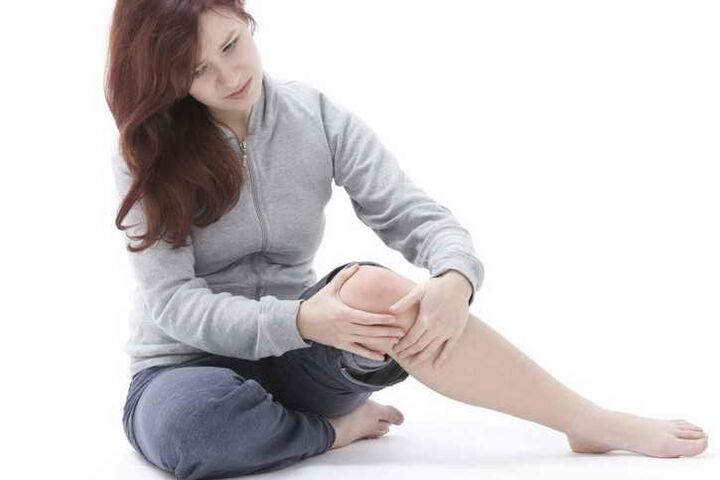
The knee is an organ in which the kneecap is aligned with two bones. The cup, located in front of the knee, is connected by the tendons of the quadriceps muscle, which continue with ligaments. The bones are covered with cartilage, and between them there are lunar cartilages - menisci. In addition, the knee has several synovial pockets for fluid that acts as a lubricant for the knee.
This entire complex mechanism is designed for flexion, extension and shock absorption during movement. Any violation in his work leads to discomfort and pain. How to treat knees should be determined by a traumatologist after diagnosis.
The causes of pain can be very diverse, from tiredness and overexertion to serious illness, and are classified as follows:
- Knee injuries - all mechanical damage can be attributed to such reasons. Bruises, torn ligaments, outflow of blood into the joint cavity with intra-articular fractures, injuries and tears of the menisci, luxation of the patella. Such causes are usually characterized by acute localized pain, severe swelling, bruising, and difficulty or inability to move the joint.
- Inflammatory and degenerative joint diseases are the most common cause of knee pain in aging people. Arthritis, osteoarthritis, chondropathy, bursitis, Schlatter disease and other diseases. Characterized by increasing pain or simply discomfort with movement, pops with knee flexion/extension, pathologic joint flexibility, and chronic knee instability.
- Various systemic infectious and viral diseases also lead to inflammation and pain. These include osteoporosis, bone tuberculosis, syphilis, osteomyelitis and many others. Such pain can be of different nature depending on the inflammation of the body damaged by viruses and infections.
- Disorders in which pain radiates to the knees. Injury to the sciatic nerve, osteoarthritis of the hip joints, fibromyalgia. Such pain is a side effect, so it is periodically aching or stabbing. Treatment of the knee joint does not provide any relief in such cases.
The diagnosis and finding out the cause of the pain determine the treatment of the knee joint. If symptoms of unknown origin appear, it is better not to self-medicate.
knee treatment
Knee pain can be treated conservatively or surgically. Surgical methods are an operation to eliminate the cause of pain. Conservative therapy is a set of techniques aimed at eliminating symptoms and pathologies. So what is the treatment for knee pain?
surgical methods
Such methods can be prescribed for severe injuries and inflammatory and degenerative diseases. Acute pain in the joints can indicate serious injury or complete wear and tear of the cartilage. Therefore, several types of operations are used.
arthroscopy
Such an operation can be performed both for the diagnosis and for the treatment of severe joint injuries. Arthroscopes are inserted into the knee through micro-incisions, one is equipped with a camera and shows an "image" on the screen, the other is intended for manipulations inside the joint, mainly for treatment.
Such an operation significantly reduces the postoperative and rehabilitation period and practically leaves no scars. With the help of an arthroscope, torn ligaments and menisci are operated on. Sometimes it is used to treat osteoarthritis, but its effectiveness in this case is still questionable.
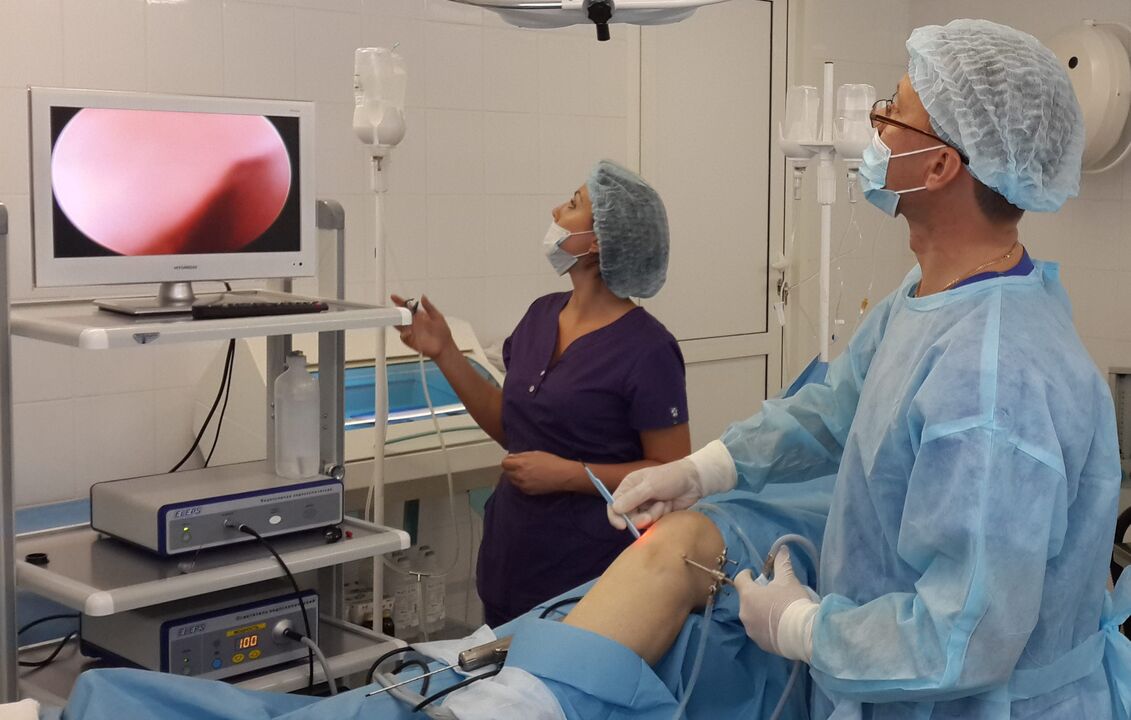
osteotomy
The most radical method, with such an operation, the knee joint is completely opened, the kneecap is removed with the help of incisions, which allows manipulations directly in the cavity. This method is also called open. Usually, braces are attached to the bones, which significantly help to reduce the stress on the joints.
A major disadvantage of such an operation is a long rehabilitation period. The patient can walk after 1-2 months, and lead an active lifestyle only after a year. But such an operation usually guarantees a long remission.
You should know that osteotomy is used in cases of severe damage or deformation of connective tissue, when partial removal of the diseased element is required.
Endoprosthetics
It is performed when all other treatment methods have been exhausted and the joint continues to collapse and completely cease to function. After complete removal of the affected element by osteotomy, an implant in the knee joint becomes prosthetic. It can be transplanted from a donor or replaced with an artificial prosthesis. They are made of plastic, ceramic or metal alloys.
Thus, the disease disappears completely, and the patient is in remission forever. However, it is worth considering that the prosthesis can be rejected, and other side effects are also possible. Israel remains a leader in arthroplasty.
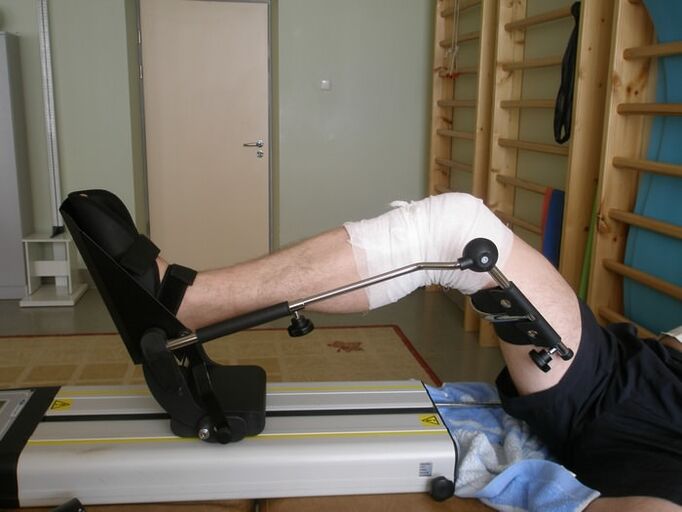
For reference! Knee pain is treated more gently in most cases. And this therapy is very effective, and most importantly, it allows you to maintain an active lifestyle during the rehabilitation period.
Conservative treatment methods
Such methods are a complex of techniques aimed at regeneration, healing and rehabilitation of joints. It includes drug treatment, physiotherapeutic exercises and gymnastics, physical therapy. In some cases, it may involve traditional methods. At the first manifestations of knee pain, it is worth choosing a knee brace or brace that will slow down tissue destruction before starting the main treatment and relieve the symptoms of the disease.
Medication
What to do first if you have knee pain? Of course, use painkillers and analgesics. Such agents can be in various pharmacological forms. Ointments, tablets are recommended for dull and aching pain. With acute and shooting, it is better to resort to injections, which immediately relieve pain.
Once the diagnosis is made, nonsteroidal drugs can be prescribed. With injuries, severe osteoarthritis and other degenerative diseases, the knee often swells. That's what these drugs are for. They improve blood circulation, reduce inflammation and relieve pain.
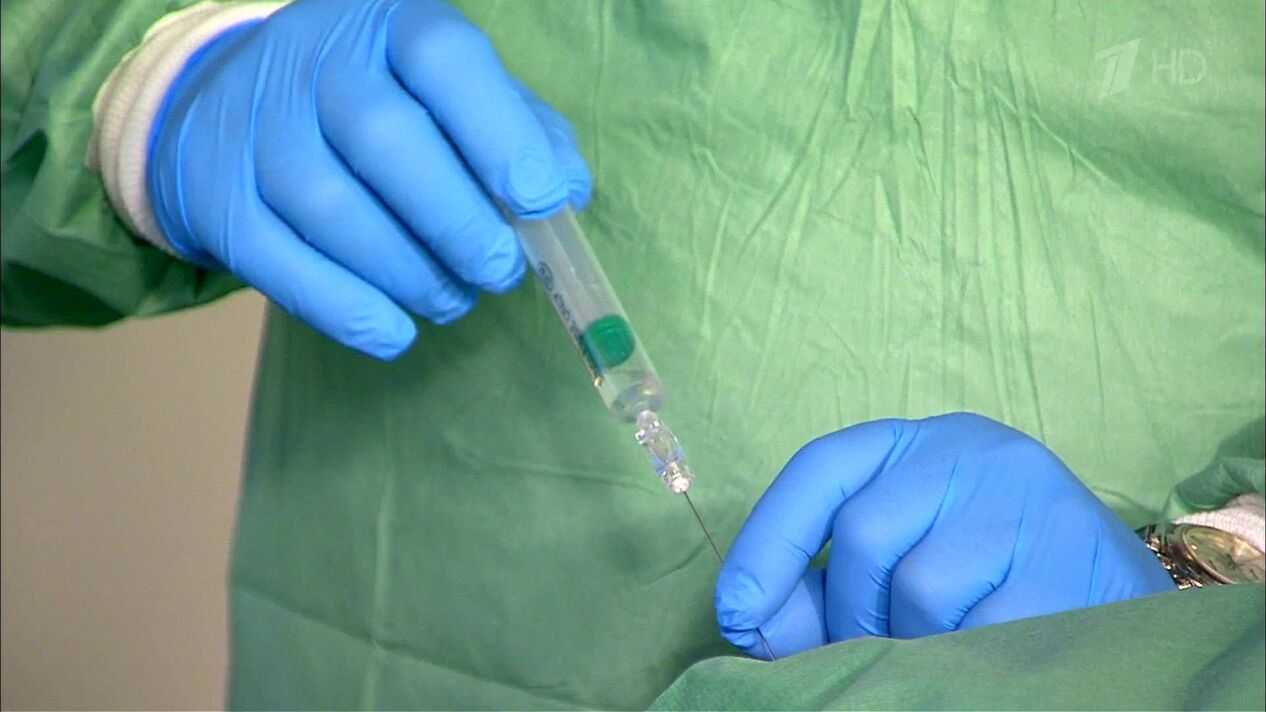
The final stage of drug treatment will be taking chondroprotectors. They are prescribed for absolutely any damage and changes in cartilage tissue. This is the basis of conservative treatment.
Fact! Chondroprotectors, like bricks, restore cartilage. They have properties to regenerate them and restore elasticity.
However, it is worth preparing for the fact that treatment with chondroprotectors will take a very long time. The training lasts between three months and one year. The pharmacological form can be in tablets, ointments and injections. By the way, such substances are also found in food, so with pain in the knees, doctors recommend eating jelly, meat broths, avocados and jelly.
In some cases, intramuscular injections of hyaluronic acid may be prescribed. It is this substance that is part of the synovial fluid that fills the joint cavity. It helps in the regeneration of connective tissue and recovery will be much faster.
Exercise therapy and gymnastics
This is the most important phase after both surgical treatment and medication. Physiotherapy should also be done to prevent pain. It should take place under the supervision of a rehabilitation specialist in a special center or sanatorium for the correct implementation of a series of exercises. It usually takes 2-3 months.
With its help, the knee joint gradually returns to active life, increasing the range of motion. Swimming will be the most important element. Not only does it allow the joint to move smoothly, it also improves blood circulation and metabolism, which has a positive effect on tissue repair.
physical therapy
Such procedures are aimed at safe recovery and treatment. These methods give the best result with the least amount of stress. This includes the following methods:
- Ultrasound therapy;
- Electrophoresis;
- Therapy with infrared rays;
- various warm-up exercises.
How else can you heal your legs when your knee is aching badly? Also, a good physical therapy procedure is massage, which increases blood circulation and speeds up the recovery process. Massage well relieves pain and also has an overall tonic effect.
Topical preparations can be used without a doctor's prescription, such treatment is acceptable if the knees hurt. But most likely, this will only eliminate the symptoms, and the cause will remain, and sooner or later the discomfort will return.
Folk methods of treatment
How to treat knee pain with folk methods, probably every patient who has ever encountered this disease knows:
- The first way will be to warm up the joint. This can be done at home with the help of special compresses made from vodka and honey.
- You can visit a bath or sauna, which has a good effect on the whole body.
- A very modern method of warming up will be a warming orthosis with a battery. It is comfortable, convenient and does not require much effort. One session can relieve pain in just 20-30 minutes.
- Moor and algae wraps also have a positive effect on the joints. They are able to restore the elasticity of the cartilage in a short time, improve blood circulation, which contributes to better tissue nutrition.
It is important to remember that alternative methods are ineffective for serious injuries and in the last stages of illness. Therefore, any home treatment should be discussed with your doctor.
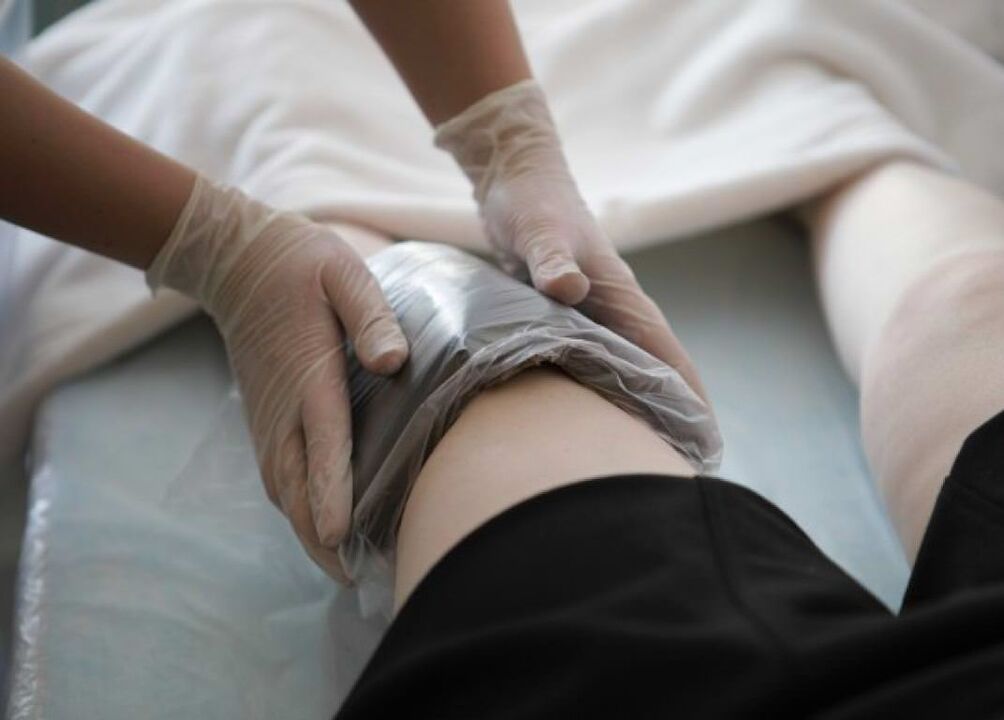
Patient feedback on treatment methods
It is impossible to answer the question of how to treat the knee joint without identifying the cause, since symptomatic treatment in this case can turn the disease into a chronic one at an early stage. An integrated approach is always required and patient feedback confirms this.
- Woman, 55 years old: "My knee has been hurting for a long time. I couldn't understand why, then I went to the doctor anyway, and it turned out that I had osteoarthritis. They prescribed me chondroprotectors, which made it possible for me. " Forget the pain with the help of exercise therapy. "
- Man, 35 years: "He suffered a serious knee injury - a meniscus tear. The attending physician prescribed an arthroscopy, after a short rehabilitation he returned to big sports. "
- Man, 48 years old: "Unfortunately, arthrosis completely destroyed my joint, I didn’t pay attention to the aching pain for a long time. I had arthroplasty and a ceramic joint. I've returned to an active life and even started running in the mornings. " . "
- Guy, 20 years old: "I had a pinched sciatic nerve, which gave me a dull ache in my knee. I couldn't understand the reason and smeared the joint with non-steroidal ointments. Then I went to the doctor and found out that this pain was secondary, and mineKnees are healthy. "







































